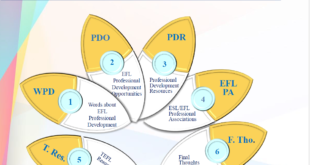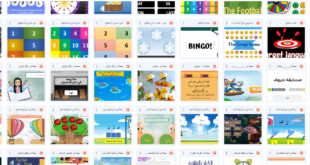? How to present your vocabulary
Because of the importance of this question ,we will discuss the Techniques in presenting vocabulary. we should try different ways of teaching in order to reach the information to the students. Therefore, different students have different minds.
Teaching vocabulary:
We have two types of vocabulary :
1) Active vocabulary.
It is taught to be produced by students in speaking and writing.
2) Passive vocabulary.
It is taught to be understand and recognized by students upon hearing or reading it.
Techniques in presenting vocab.
Edward Antoney defines it like this ( a technique is a particular trick, strategy or contrivance used to accomplish an immediate objective.)
Here are examples of techniques to use :
1) real objects:
It is objects and real things can be brought to school. Such as : a toy, an egg, a whistle and a stick….etc.
2) the use of imagination.
To teach the word ” puddle” for example !
(هذه طريقة لاستخدام الخيال في تقديم الكلمة مثلا كلمة puddle وهي تعني بركة مياه صغيرة كيف تقدميها للطالبات ؟
تقدميها عن طريق استخدام المخيلة ؟ كيف ؟؟
تقومين بحمل قارورة مياه صغيرة وتسكبيها أمام الطالبات بداخل علبه دائرية ! وتقول ماذا لو جمعنا هنا قوارير مياه كثيرة ما لذي سيحصل بداخل هذه العلبة سيقولوا أنها ستكون بركة مياه).
3) pictures:
Teacher should collect pictures from news papers or magazines this might stimulate the students to interact with their teacher !
4) flashcards.
You show students a big size of paper or card actually written on it any word , for example car or cat . this in a written form not picture. You don’t use any kind of pictures in this technique.
5) body language.
Everyone knows about body language or gestures ! it is facial expressions people use to show their feeling like happiness, sadness, anger and satisfaction. In gestures you use your arms or hands or legs to show the meaning of sth big small … etc.
6) Definition.
*Note that, this technique is not suited to a beginner classes*
Example for this technique. To teach the word bridge you say ( a bridge is something we walk on while moving from one place to another above the river).
7) synonyms.
It means similar to or the same of another word like sad/ unhappy.
The meaning of a new word can be taught by giving synonymous word. When you want to give the student synonym word you should give her a word that is familiar to her. A word she has an idea about. Here examples :
Happy, happiness, joy, cheerfulness, fun, funny, delight, glad, gladness, pleasure, satisfied, pleasant..!
8) Antonyms:
It is known that when you give the opposite of sth you mean it !
This is words with opposite meaning. For example, good, bad / big, small…
9) Cognates:
Words in the student’s mother tongue ( her own language) that have the same or very similar form as the English word . For example , computer, telephone, television, in Arabic we use the same form but in Arabic handwriting.
10) illustration:
Illustrative sentence” : a teacher creates a linguistic context in which the meaning of the
one unknown word is explained.
11) Scales:
The teacher shows the meaning by sequencing the words along the scale between two Antonyms. For example,
0% never – sometimes – often – generally – always 100% ))!
12) Audio presentation:
Words can be presented by a tape recording, the noisy of a jet plane, a horse galloping, a river gurgling or children splashing in water. The process is simple you just tell the class to listen to the sounds only and guess what is it ?.
13) Translation:
The teacher gives the mother tongue equivalent for the word.
Prepared by:Miss Sun
————————————–
نسعد بزيارتكم للموقع وتصفحكم لمواضيع وأقسام موقع بلبل إنقلش
English Level Test
اختبر مستواك في اللغة الأنجليزية عبر احد هذه المواقع
https://bulbulenglish.com/category/english-level-test/
الرخصة المهنية للمعلمين English
Stories
https://bulbulenglish.com/category/stories/
Lessons- دروس اللغة الإنجليزية
https://bulbulenglish.com/category/lessons/
Games – العاب تعليمية مميزة
https://bulbulenglish.com/category/games/
Quizzes- اختبارات متنوعة
https://bulbulenglish.com/category/quizzes/
Grammar-شروحات القواعد
https://bulbulenglish.com/category/grammar/
———————————————-
?How to present your vocabulary
 بلبل English لتعليم اللغة الإنجليزية
بلبل English لتعليم اللغة الإنجليزية


